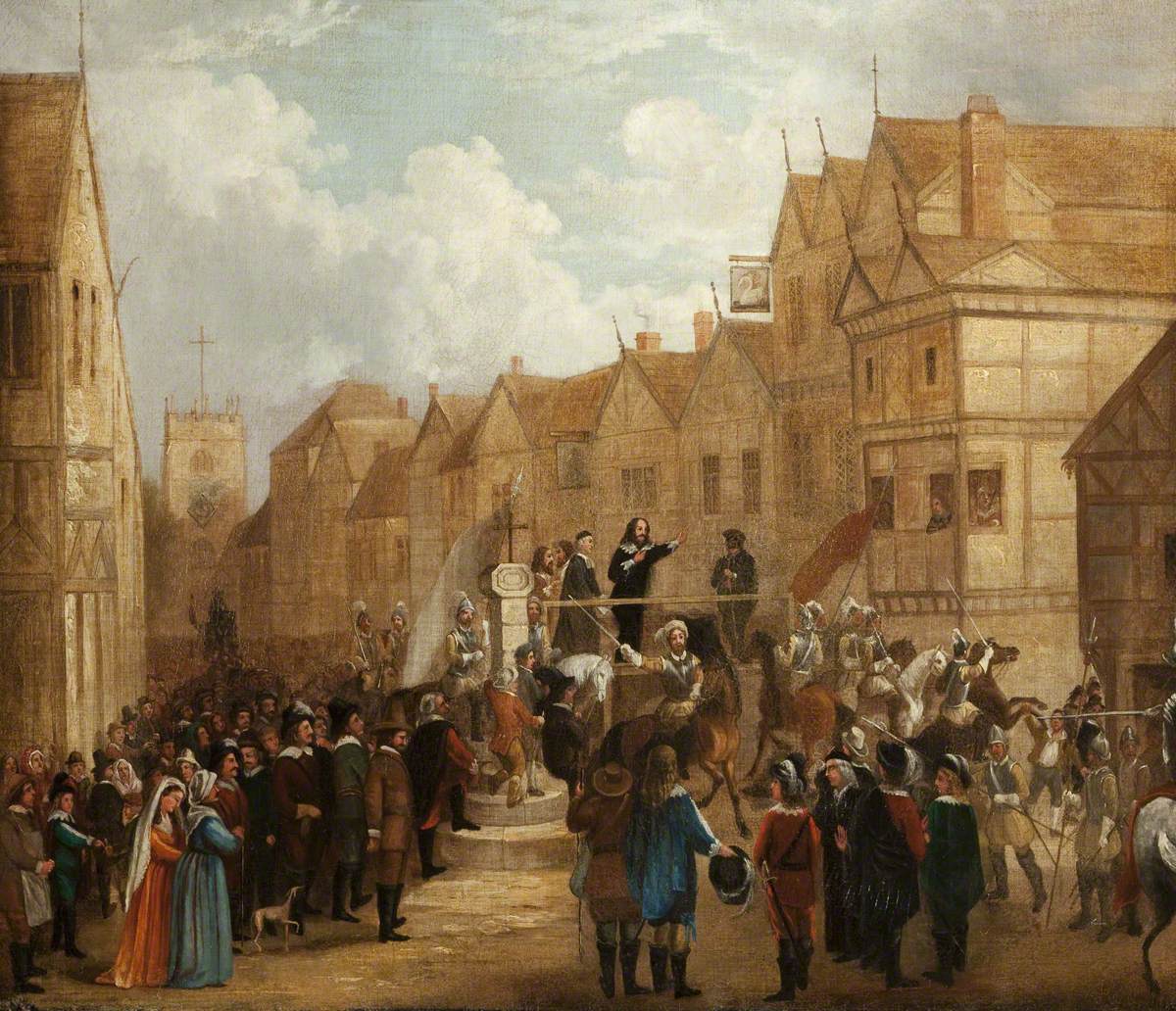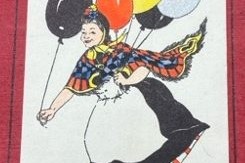
Looking through the Lancashire Authors' Collection, I discovered a very interesting account of the 1643 Bolton massacre from Henry Fishwick in his book, A History of Lancashire (1894). This Victorian era book provides a historical summary of the events, which are as follows:

For some context, between the periods of 1642 to 1651 there was a British civil war which took place during the reign of Charles I. The King had ruled without parliament which meant that he passed laws and authorised taxes without the consideration of the people. Charles I later tried to make religious changes in Scotland, and this was not taken kindly. After losing two campaigns to try and overpower the Scots, Charles had no money to rebuild his army and was then forced to reinstate parliament. Charles was expecting to receive the money he wanted but was faced with parliament trying to limit his powers. This is where the battle between the Parliamentarians and the Royalists began.
The town of Bolton in the seventeenth century was primarily Parliamentarian, and this meant that some of the men from Bolton had joined the fight against the Royalists. This left Bolton unprotected and with about 500 men to protect the town. Taking advantage of this situation, on 16th February 1643 the Earl of Derby (James Stanley) marched with his men from Wigan, the Royalist headquarters, towards Bolton with around “1,000 horse and foot” (Fishwick, 1894, p. 137). The Royalists had managed to get within a mile of Bolton without being discovered. However, the Royalists did not march straight towards Bolton but made their way around by Great Lever. This meant that they were inevitably caught by the Parliamentarians who stood guard by the many forts that had been made in preparation for the impending fight. In A History of Lancashire (1894) there is an account that says the invaders (Royalists) had iron bullets of five or six pounds which shot through mud walls. Whilst another supposed account says that “they hit but one lad” (Fishwick, 1894, p. 138), taking a slight jab at their battle attempts.
During the attack, Royalists in Bolton had set fire to a few houses but they were ultimately driven back and retreated to their headquarters in Wigan, supposedly taking two or three crates of Royalist bodies with them.
The Royalists had attacked Bolton not once, but twice, and the leader of this attack, the 7th Earl of Derby, was captured. When his appeal for pardon to Parliament was rejected, though supported by Oliver Cromwell, he endeavoured to escape but was recaptured and executed at Bolton (Britannica, 2025). His execution took place right outside the Ye Olde Man & Scythe pub on 15th October 1851. Stanley had succeeded to the earldom by the death of his father on September 29th 1642, and on Jan 12th 1650, he was chosen by Charles II to command the forces of Cheshire and Lancashire in the proposed Royalist rising (Britannica, 2025).
Ye Olde Man & Scythe is one of England’s oldest recorded pubs, built and opened in 1251; this establishment has had many owners and has been rebuilt more than a few times. However, one thing has remained the same, there are always reports of strange happenings and hauntings in or around this pub. James Stanley is supposedly haunting the old pub and still has a connection to it as the chair that he was sitting in just hours before he was executed is still in the pub to this day, but the question is whether the Earl is still there himself…
Henry Fishwick, A History of Lancashire (1894)
Bibliography
Anon. (n.d.) The Execution of James, 7th Earl of Derby. [Painting] Manx National Heritage. [Online] Available from: https://artuk.org/discover/artworks/the-execution-of-james-7th-earl-of-derby-150121 [Accessed 2 April 2025].
Britannica. (2025) James Stanley, 7th Earl of Derby. [Online] Available from: https://www.britannica.com/biography/James-Stanley-7th-Earl-of-Derby [Accessed 12 March 2025].
Dyck, A. van (1636-37) James Stanley, 7th Earl of Derby. [Painting] National Portrait Gallery. [Online] Available from: https://www.npg.org.uk/collections/search/portrait/mw01804/James-Stanley-7th-Earl-of-Derby [Accessed 2 April 2025].
Fishwick, H. (1894) A History of Lancashire. London: Elliot Stock.












